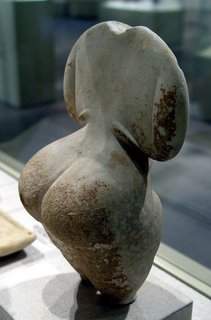
About the only thing left is the dog, right dog? Dog? Get back here!—The disgrace of Hwang Woo Suk is now complete and the story gets sadder. It turns out now, he faked his human stem cell cloning experiments, embarrassing not only himself but his country and two science journals. He could produce no evidence to his university that he did what he said he did. It wasn't a question of exaggerating; he faked it.
His announcements, published in Science and Nature galvanized biology and made him a national hero, bordering on rock star status. His country was so proud of him; Little Korea passes them all. [I'm very fond of Korea and the Koreans. I feel their pain.] But what happens raises some really uncomfortable issues not discussed elsewhere—which is why I blog, I guess.
I've written here before that American science, if not also the American Empire, is in decline, that other countries are now doing serious work that often is ignored by American media. It was the reason part of me wanted to believe him. But while I was reading Hwang's papers and the reaction to his claims I was taken by two things. One, with stem cell research a matter of some controversy here, incredibly, many of us wanted very badly for Hwang's work to be real and true, and perhaps some of the coverage was biased that way. We were cheering him on, in part because many of us believe the field can do good things for people, and partly a reaction to the restrictions on the research forced on us by the morally obtuse—look, even Korea is ahead of us because of the ignorant meddling! The second thing that came to me was the little alarm in the back of my head wondered how a veterinarian in a small Asian country can do this when no one else seems able to. Turns out he couldn't.
I long ago learned to trust that little alarm in the back of my head. All good reporters learn that. I should have paid attention. So should we all. Science journalism does so little real probing. It is hindsight now but the signs of problems were all over the place, including the suspicious similarities in the illustrations of the cell lines. And, I'm sorry to say, the simple unlikelihood he really could have done that. I feel sorry for the Koreans and for Hwang.
Hwang also claimed to have cloned a dog. Whether he did or not remains to be seen. Don't bet on it
[Photo by Reuters]






















